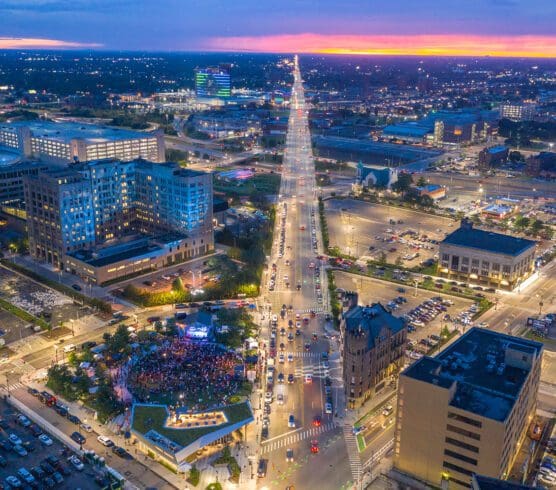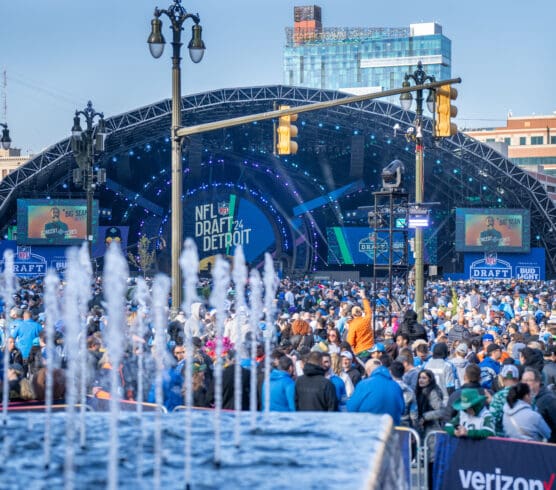It is widely understood that to have a thriving retail and restaurant ecosystem in a densely built downtown area, a critical mass of nearby consumers is necessary to patronize the businesses. Comprising the critical mass are daily workers, weekend and evening visitors and, of course, residents.
While the number of visitors to Downtown Detroit is strong, the number of workers is not. Since the pandemic and the option of remote work, the Downtown sees on average about half the number of workers compared to 2019. With fewer workers on-site to sustain daytime activity levels, a stable and growing population of residents is essential to fill the gap and drive consistent demand for retail and dining options. Unlike workers and visitors, residents contribute to the local economy throughout the day and evening, playing a key role in creating the vibrant, round-the-clock ecosystem that Downtown Detroit needs to thrive.
Unfortunately, Downtown Detroit lags many other cities in regard to the number of residents, both in terms of total residential population and in population density. The table below shows a few comparisons.

Figure 1: Downtown Population and Density Comparison
Fortunately, there is plenty of room to grow. Of the 437 buildings in Downtown Detroit, only 42 buildings are residential, or less than 10%.

Figure 2: Residential Development: Percentage of Buildings Downtown
There is a concerted effort to increase the number of residential units in Downtown both in new construction and adaptive reuse projects that convert older office buildings for residential use. In the last two years, three new residential buildings opened, increasing the number of units in Downtown by 22% (1,059 units). The DDP is tracking additional residential developments planned for completion before 2030, which will add an additional 1,180 units – 20% more than 2024 total.
Table 1: Number of Residential Units added in 2023 and 2024
| Building Name | Number of Units | Year Complete |
| Total Units in 2022 | 4,844 | |
| Book Building and Tower Residential | 229 | 2023 |
| The Exchange | 330 | 2023 |
| The Residences at Water Square | 500 | 2024 |
| Total New Units 2023-24 | 1,059 |
Source: Downtown Detroit Partnership
That is incredible growth over a short period of time. Time will tell if all of the planned units will be built, as that will likely depend on overall demand and affordability. As a region, Southeast Michigan is not growing, at least not quickly, so demand for Downtown living will be driven by shifting preferences amongst residents that already live in the area or others moving in from out-of-state. When the number of people in a region is not increasing (referred to as exogenous growth), then any growth in the Downtown area will have to come from people who have chosen to move there over other options. We’ve seen this change in preference for urban and downtown living highest in millennials, who choose to live in cities in higher percentages than previous generations. We have also seen a trend with empty nesters choosing a Downtown lifestyle.
As we work to continue to grow Downtown’s residential population, DDP is committed to stewarding an environment that is accessible and appeals to the evolving needs and diverse desires of people in search of a place to call home. We can influence those preferences by informing DDP’s work through strategic engagement and continue to work to increase the value proposition of the Downtown itself. Downtown is a special place, which cannot be replicated. The demand for living Downtown will continue to be high if we maintain our momentum and provide diverse options for individuals and families.



